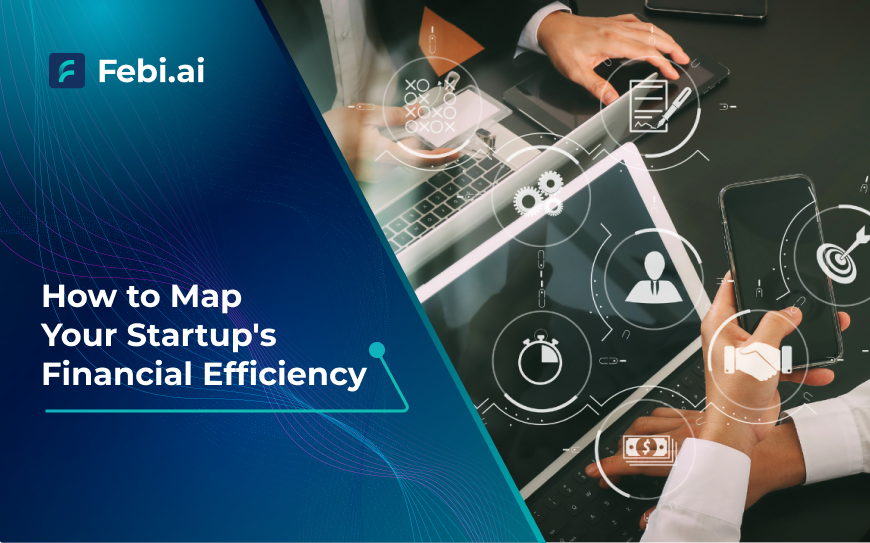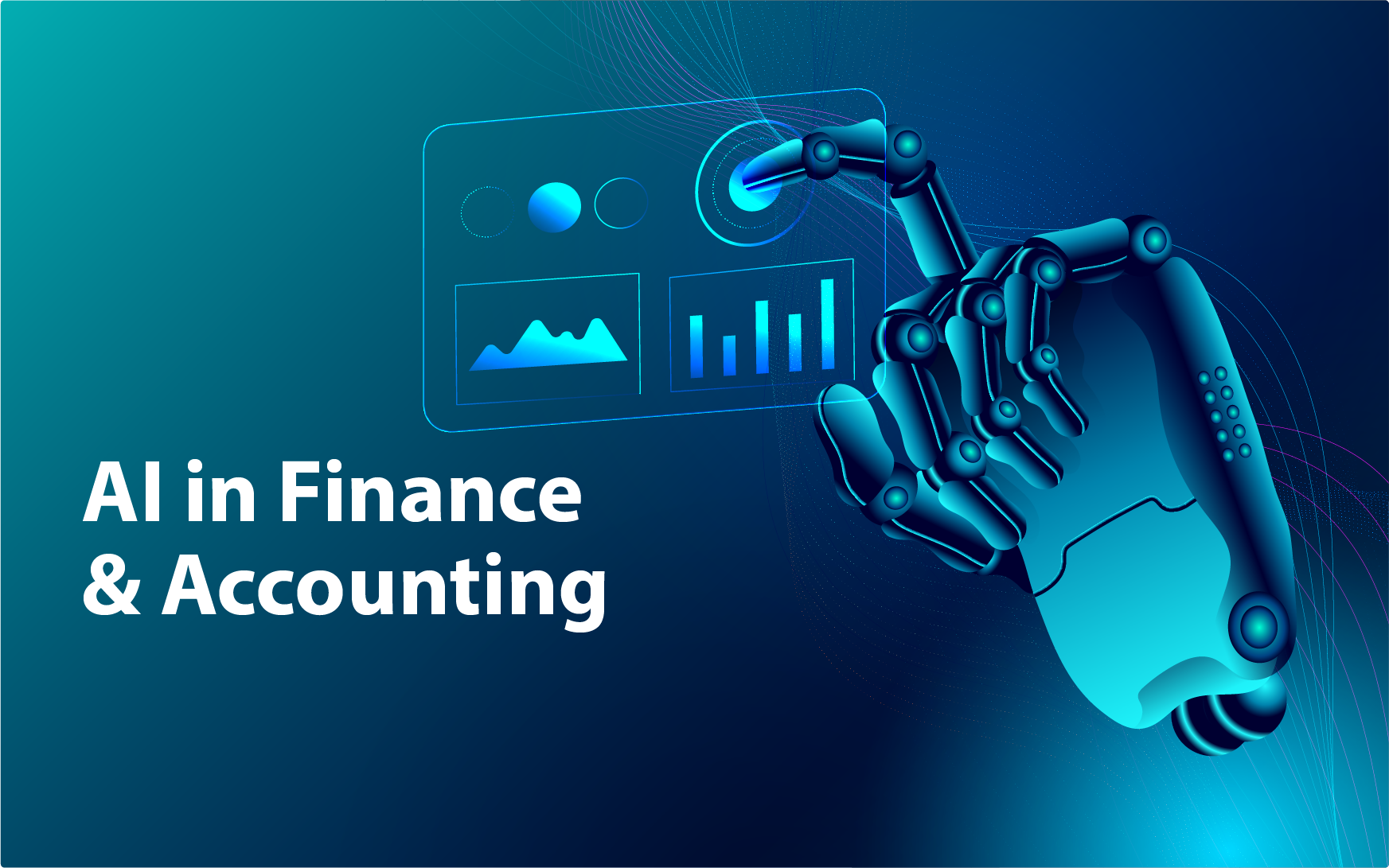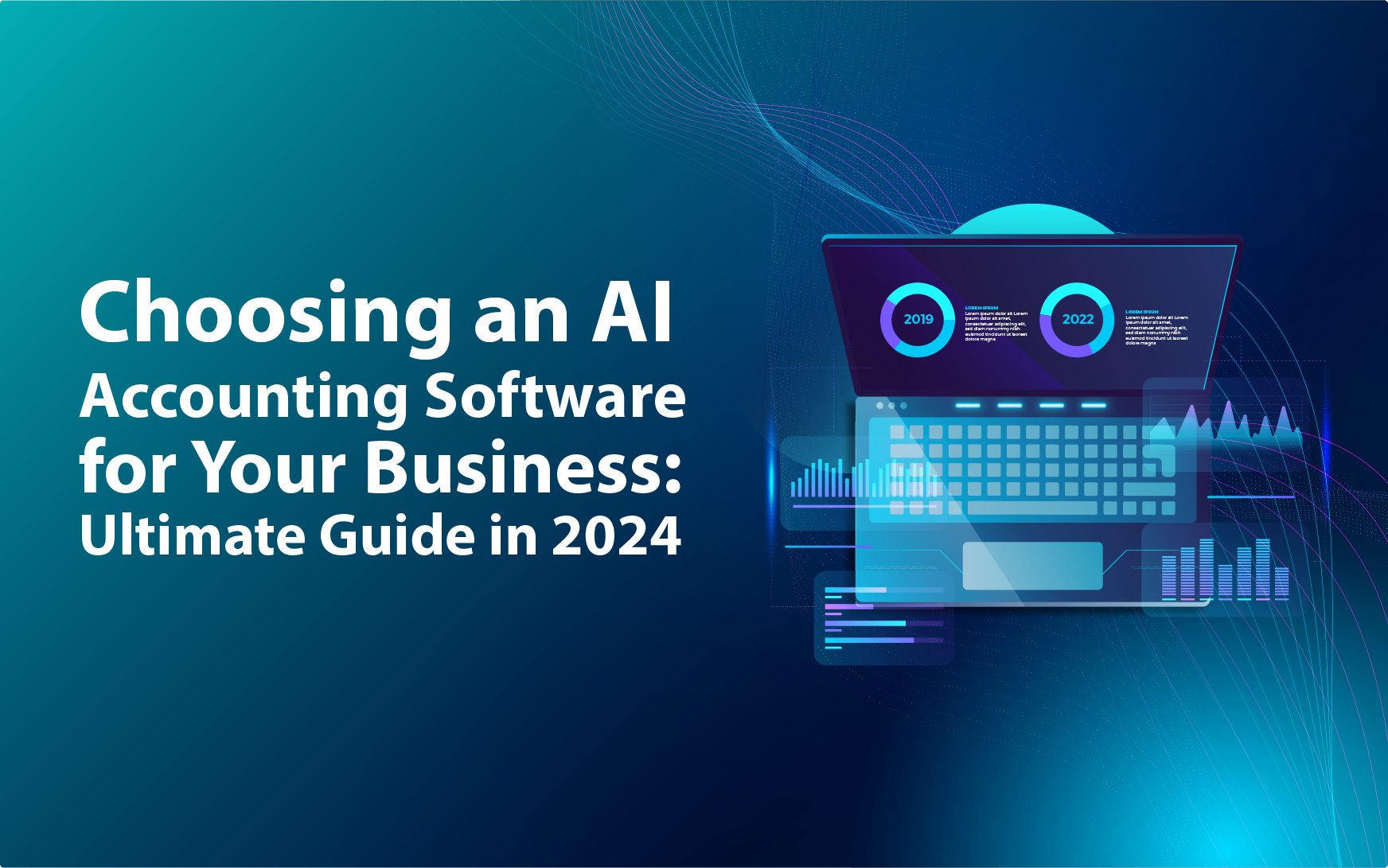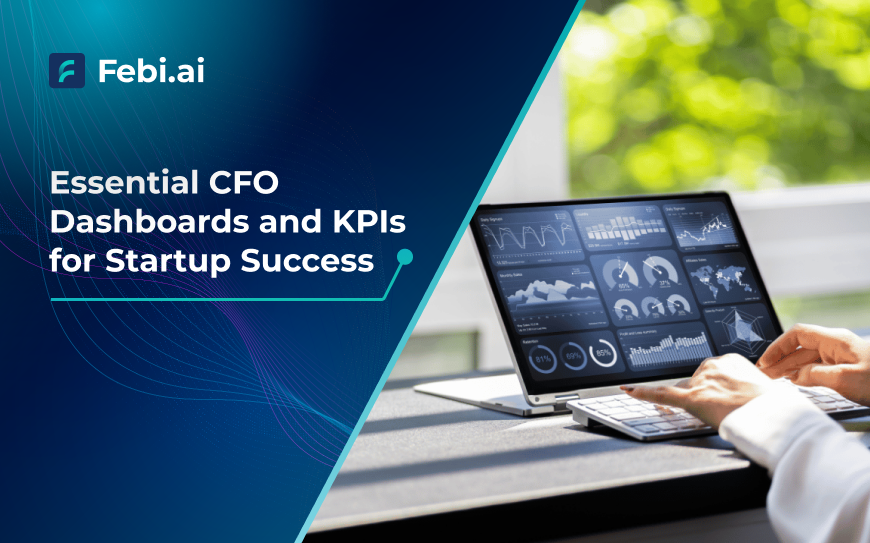In today’s world, data is the new goldmine. Not only does it keep all operations flowing seamlessly it also acts as the cornerstone for smart decision-making and optimising ROI to its best potential. Yet, the conventional methods of manual data entry are increasingly proving to be inefficient, error-prone, and time-consuming
Enter Artificial Intelligence (AI), a game-changer that automates data entry processes, enhances accuracy, and boosts employee productivity. Planning to implement accounting automation in your business? Febi can help you get started. Whether you’re contemplating transitioning from manual entry or seeking to optimise existing AI systems, this comprehensive guide will furnish you with the necessary insights to complete your journey to AI-powered data entry.
Table of Contents
Understanding AI Data Entry
What is AI Data Entry?
AI data entry represents a modern approach to data management, leveraging cutting-edge technologies like machine learning algorithms, natural language processing (NLP), and optical character recognition (OCR). Unlike conventional methods, AI-driven systems require minimal human involvement while extracting, interpreting, and validating data from diverse sources. This revolutionary process streamlines data management by automating tedious tasks, thus enhancing efficiency and accuracy.
Machine learning algorithms play a pivotal role in AI data entry, enabling systems to learn from data inputs and improve their performance over time. NLP technology enables these systems to understand and interpret unstructured data, such as text from documents or emails, facilitating the extraction of relevant information. OCR technology further complements the process by converting scanned documents or images into editable text, expediting the digitisation of physical documents.
The hallmark of AI data entry lies in its ability to handle various data sources seamlessly. Whether it’s documents, forms, images, or emails, AI-driven systems can extract, interpret, and validate data with precision, reducing the risk of errors and inaccuracies associated with manual entry.
Benefits of AI Data Entry
Automating data entry offers a plethora of benefits to businesses across various industries. Here are some key advantages you must know:
1. Time Efficiency : Automation slashes the time required for data entry, freeing up resources for strategic endeavours. Statistics suggest that automation in accounting reduces manual data entry work by up to 80%. By automating repetitive tasks, AI data entry systems allow employees to focus on higher-value activities, such as analysis and decision-making, leading to increased employee productivity and efficiency.

2. Enhanced Accuracy: Did you know that humans make 100x more data entry errors when compared to entries powered by automated entry systems or artificial intelligence technology?
AI algorithms minimise errors, ensuring higher data accuracy and reliability. Unlike manual data entry, which is prone to human error, AI-powered systems can accurately extract and validate data from various sources, reducing the risk of inaccuracies and discrepancies in business records.

3. Cost Savings: By eliminating the need for extensive manual labour, AI data entry reduces operational costs. Businesses can save on labour expenses associated with hiring and training data entry personnel, leading to significant cost savings over time.
4. Scalability: AI systems seamlessly handle large data volumes, facilitating business scalability. Whether processing a few hundred records or millions of data points, AI-powered data entry systems can scale to meet the growing demands of businesses without compromising efficiency or accuracy.
5. Improved Data Quality: AAI-powered data entry processes often result in higher-quality data due to reduced human error and standardised extraction techniques. With AI, businesses can ensure that their data is clean, consistent, and up-to-date, enhancing the reliability and usefulness of their information assets.
6. Enhanced Decision-Making: Access to accurate and timely data empowers businesses to make informed decisions quickly, driving efficiency and competitiveness. By leveraging AI data entry systems, organisations can access real-time insights and analytics, enabling them to identify trends, opportunities, and potential risks effectively.
AI data entry improves operational efficiency and accuracy and enables businesses to make better-informed decisions, ultimately driving growth and competitiveness in today’s dynamic business environment.
Getting Started with AI Data Entry

1. Evaluate Your Data Entry Needs
- Data Volume: Assess the amount of data you regularly handle. Determine if your current manual processes can efficiently manage this volume.
- Complexity: Gauge the intricacy of your data entry tasks and the nature of the data involved. Identify any repetitive tasks that could benefit from automation.
- Frequency of Entry: Understand how often data requires updating or input. This insight helps determine the optimal frequency for AI systems to operate effectively.
- Data Sources: Identify the various sources of data within your organisation, such as documents, forms, emails, and databases. Recognising the diversity of data sources informs the selection of appropriate AI tools and techniques, ensuring compatibility and effectiveness.
2. Choose the Right AI Tools
- IDP Technology: Intelligent document processing uses multiple technologies such as OCR (Optical Character Recognition), Machine Learning and Artificial Intelligence.
- Data Extraction: Prioritise tools with robust data extraction features. These features enable accurate identification and extraction of relevant information from various sources. The ability to extract specific data fields is crucial for precise and effective AI-driven data entry.
- Integration: Look for AI tools that seamlessly integrate with your existing software systems, however, it’s best to implement a software that offers end-to-end features for your bookkeeping, invoicing, payments, and reporting requirements. Compatibility with your current infrastructure ensures smooth implementation and minimises operational disruptions in your business.
- Customisation: Consider the customisation options AI tools offer to tailor the data entry process to your business requirements. Having such an AI accounting tool provides greater flexibility and adaptability, allowing you to address evolving needs effectively.
3. Keep Your Data Prepared
Most often than not, firms and organisations seem to break in sweat just before or during the tax season. However, you can ensure to avoid all hassle and last-minute data collations by using a software that adds, manages, and securely stores all your data and files in it.
-
Ensuring Data Quality: Prioritise cleansing and standardising your data to uphold consistency and accuracy. This process involves identifying and removing duplicates, rectifying errors, and formatting data
uniformly, laying a solid foundation for reliable analysis. -
Implementing Effective Labelling: Properly label your data to streamline AI model training and enhance accuracy. Labelled datasets furnish essential information for AI algorithms, enabling them to learn patterns
effectively and make precise predictions. -
Establishing Data Governance: Formulate robust data governance policies and procedures to safeguard data integrity and maintain ethical standards throughout the data entry process. Implementing a structured data
governance framework ensures secure management of data and compliance with regulatory mandates, fostering trust and transparency in your operations.
4. Training AI Models
-
Utilising Transfer Learning: Optimise the training process and enhance model performance by leveraging pre-trained AI models and transfer learning techniques. Transfer learning enables the transfer of knowledge
from existing models to new tasks, reducing the need for extensive training data and accelerating model development.
5. Integration and Deployment
-
Seamless API Integration: Integrate AI data entry tools seamlessly with existing software systems using Application Programming Interfaces (APIs). This facilitates smooth communication between all applications
you might use at your company, ensuring seamless data flow across the ecosystem. -
Rigorous Testing and Validation: Prioritise comprehensive testing and validation to guarantee the smooth deployment and optimal functionality of the AI system. Thorough testing involves assessing the system’s
performance across various conditions and scenarios to ensure reliability and accuracy. -
Pilot Implementation: Consider conducting pilot implementations of AI data entry solutions before full-scale deployment. Pilot programs provide an opportunity to evaluate the solution’s effectiveness and
feasibility in a controlled environment, allowing for necessary adjustments and optimisations before broader adoption.
6. Monitoring and Maintenance
-
Performance Metrics Establishment: Define key performance indicators (KPIs) to gauge the effectiveness of your shortlisted AI data entry systems. Tracking these metrics enables the identification of areas for
enhancement and the optimisation of system performance. -
Pursuing Continuous Improvement: Remain updated on advancements in AI technology and explore opportunities for optimisation. Continuous improvement entails refining processes, trained algorithms, and embracing
new technologies to maintain competitiveness and efficiency. -
Feedback Mechanism Implementation: Introduce a feedback mechanism to collect input from users and stakeholders regarding the performance of the AI data entry system. User feedback offers valuable insights for
identifying improvement areas and addressing user concerns, ensuring continuous refinement and user satisfaction.
Best Practices for AI Data Entry
When diving into AI data entry, it’s wise to explore and implement things one step at a time. Start with small pilot projects. This way, you can test the effectiveness of AI solutions on a smaller scale and gain all valuable insights before making a full-scale commitment.
Data security should always be a top priority. Implement robust security measures to protect sensitive data handled by AI systems. This ensures customer trust and keeps you compliant with regulations, safeguarding your reputation and avoiding costly penalties.
Don’t undermine the value of employee training!
Provide comprehensive training to employees on how to use AI data entry tools effectively. Also, opt for a user-friendly accounting software so its easier for you and your employees to use all its features. Encourage collaboration between humans and machines, empowering your workforce to leverage AI technologies to their fullest potential and work smarter, not harder.

Keep your finger on the pulse of AI advancements. Stay informed about the latest technologies and trends in the field. Continuous improvement is key to keeping your AI data entry processes efficient and effective over time. Be open to adopting new tools, refining processes, and optimising algorithms to stay ahead of the curve.
In addition to these key points, regularly review and refine your AI data entry processes based on user and stakeholder feedback. This iterative approach ensures that your systems are constantly evolving to meet the changing needs of your organisation and users. By following these best practices, you can unlock the full potential of AI data entry and drive better results for your business.
Case Studies: Real-World Applications of AI Data Entry
1. Finance and Accounting
AI data entry has revolutionised finance and accounting processes, automating tasks like invoice processing, expense tracking, and financial reporting. By leveraging AI algorithms, organisations can streamline data entry processes, reduce errors, and improve efficiency.

2. Healthcare
AI data entry systems digitise patient records, streamline medical claims processing, and automate administrative tasks, improving efficiency and patient care delivery. AI-driven data entry helps healthcare professionals access
up-to-date and accurate patient information, leading to better diagnosis and treatment decisions.
3. Retail
Retailers use AI data entry for inventory management, sales tracking, and customer data analysis. AI algorithms analyse sales data to predict demand, optimise inventory levels, and automate replenishment processes. AI-driven data entry also helps personalise marketing strategies and enhance customer experiences.
4. Legal
AI data entry systems transform document management and case processing in the legal industry. AI algorithms analyse legal documents to extract critical information, identify relevant precedents, and streamline case preparation. AI-driven data entry helps legal professionals manage documents, track case progress, and automate routine tasks.
5. Education
In education, AI data entry aids in student record management, grading, and course planning. AI algorithms streamline data entry processes, ensuring accuracy and efficiency. Educators can focus on personalised instruction and student support, enhancing learning outcomes
6. Human Resources
AI data entry is increasingly used in human resources for employee onboarding, performance tracking, and payroll processing. AI algorithms automate data entry tasks, reducing administrative burdens and ensuring accuracy in HR processes. This enables HR professionals to focus on strategic initiatives and employee development.
Next Steps
Embracing AI-powered data entry emerges as a game-changer for boosting efficiency and driving growth. With Febi.ai, you’re not just getting a run-of-the-mill solution – you’re tapping into a powerful ally that revolutionises bookkeeping, invoicing, payments, compliance management, and file management and reporting.
Think of Febi.ai as your trusty sidekick in the world of data entry. It’s the tool that seamlessly integrates into your workflow, simplifying complex processes and helping you stay ahead of the curve. With Febi.ai by your side, you can streamline operations, minimise errors, and maximise productivity, all while keeping your data management game strong.
So, as you embark on your AI journey, remember that Febi.ai is here to support you every step of the way. It’s not just about adopting new technology – it’s about unlocking new possibilities for success in today’s fast-paced business world. Let Febi.ai be your guide as you navigate the exciting terrain of data management, and together, let’s shape the future of your business.










